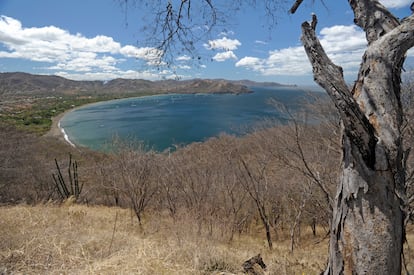Costa Rica builds the world's first Climate Code: a roadmap for surviving the new climate

Strictly opinion pieces that reflect the author's unique style. These opinion pieces must be based on verified data and be respectful of individuals, even if their actions are criticized. All opinion pieces by individuals outside the EL PAÍS editorial team will include, after the last line, a byline—no matter how well-known the author may be—indicating their position, title, political affiliation (if applicable), or main occupation, or any that is or was related to the topic addressed.

In 1974, Costa Rica adopted its Seismic Code, a set of technical standards that has protected its population for decades against one of the most devastating natural hazards: earthquakes. Thanks to this foresight, the country has calmly faced events that, in other contexts, would have caused major tragedies.
Today, half a century later, Costa Rica faces a different but equally urgent threat: climate change . Following the same logic of prevention, the country has begun drafting the world's first Climate Change Adaptation Code. This initiative seeks to establish technical, legal, and planning standards to reduce the growing risks associated with climate change: heat waves, prolonged droughts, extreme rainfall, and flooding.
The code does not replace existing plans, but rather strengthens them, ensuring that all adaptation actions are carried out with uniform, verifiable and legally binding technical criteria.
The project, led by the Federated College of Engineers and Architects (CFIA) and the Ministry of Environment and Energy (MINAE), is supported by its own resources and those of the Green Climate Fund (GCF). Since 2024, it has been advancing data collection, technical analysis, and public consultation. Its initial results will be presented at the next climate summit ( COP30 ), reflecting Costa Rica's commitment to climate resilience.
Unlike adaptation plans, which tend to be programmatic in nature, have defined timeframes, and take a more general or sectoral approach, the Climate Change Adaptation Code seeks to establish mandatory, permanent, and cross-cutting standards. While a plan indicates what should be done and within what timeframe, the code establishes how it should be done and with what minimum technical standards. This distinction is key: the code does not replace existing plans, but rather strengthens them, ensuring that all adaptation actions are implemented with uniform, verifiable, and legally binding technical criteria.
The urgency of this effort is supported by scientific evidence. Recent reports from the State of the Region and the World Meteorological Organization (WMO) warn that no Costa Rican province is exempt from the effects of climate change: severe droughts in Guanacaste, alterations in rainfall patterns in the Central Valley, and increasing flooding in densely populated areas such as San José and Heredia. Furthermore, the latest WMO report (2025-2029) estimates an 80% probability that global temperatures will temporarily exceed the 1.5 degrees Celsius threshold established by the Paris Agreement , with direct impacts on Central America.
The code proposes a comprehensive response to these challenges. It will include technical standards and best practices applicable to strategic sectors such as infrastructure, agriculture, energy, health, tourism, and land use planning. In addition to regulating public works, it will require local governments to incorporate climate risks into their development plans and budgets, promoting resilient land management.
A particularly innovative element will be the creation of the National Adaptation Information System, which will centralize risk maps, climate projections, and successful adaptation experiences. This tool will inform decisions by both the public and private sectors, facilitating safer and more effective investments.
In addition to regulating public works, it will require local governments to incorporate climate risks into their development plans and budgets.
Although Costa Rica has been a world leader in mitigation—with more than 90% of its electricity generated through renewable sources such as hydroelectric, geothermal, wind, and solar—the current context demands a complementary approach: adaptation. The recent warning of electricity rationing in the summer of 2024 illustrates how climate variability is already challenging systems that, until now, seemed robust. Adapting the energy matrix is, therefore, an immediate necessity.
Beyond its technical dimension, the Climate Change Adaptation Code aspires to become a state policy capable of mobilizing investment, innovation, and long-term planning. Its ultimate goal is to protect lives, reduce economic losses, and ensure the well-being of current and future generations. As with its Seismic Code, Costa Rica seeks to offer a replicable model for other countries facing similar challenges. In a global context where responses are often delayed, Costa Rica is once again committed to anticipation and concrete action. Facing the new climate requires new tools. This code is one of them.
EL PAÍS





